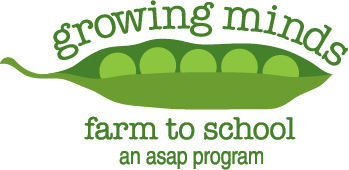Meet Erin Greene, the farmer at Last Penny Farm Alpacas in Weaverville, NC, and her children, Jacob and Sadie. Learn about how Erin became a fiber farmer, find out what she enjoys about raising animals, and meet the adorable alpacas that call this farm home.
Next, join Jacob and Sadie for a tour of their family’s alpaca farm in Western North Carolina. Learn the names of the this farm’s resident alpacas and hear about the farm chores that Jacob and Sadie help out with. Fun fact: Last Penny Farm provides alpaca manure to the school garden at nearby Wearverville Primary School. See if you can spot the “poop pile” during Jacob’s tour of the farm.
Find lesson plans that compliment these videos, plus a vocabulary list, viewing comprehension questions, and a journal prompt, below.
Lesson Plans & Resources:
- Farm Animals lesson plan (K-2)
- Seasons on a Farm lesson plan (K-2)
- Thanksgiving for Farmers lesson plan (K-2)
- Soil Exploration lesson plan (K-2)
- Farm Animals Day by Day resource list
- Compost resource list
Vocabulary words:
Camelid – A member of the biological animal family Camiledae, which includes old world camels, and new world llamas, alpacas, vicuñas and guanacos.
Alpaca – A species of domesticated South American camelid mammal. They are closely related to llamas, though usually smaller. They are often raised for their fiber, or wool.
Llama – A species of domesticated South American camelid mammal. They are often raised as pack animals for transporting materials.
Fiber – A thread or strand from which a textile can be formed. Natural fibers can be harvested from plants (cotton, hemp) or animals (alpacas, sheep, goats, silkworms).
Textile – A type or cloth or woven fabric.
Shear – To cut the wool off of a sheep, alpaca, or other animal.
Fleece – The coat of wool covering a wool-bearing animal.
Spinning wheel – A device used for spinning fibers into yarn or thread. A spinning wheel consists of a wheel, spindle, and a crank or treadel, often operated by the foot.
Halter – A rope or strap placed around the head of an animal to lead or tether it.
Pasture – Land covered with grass and low-growing plants where animals like alpacas, sheep and cows graze, or eat.
Nutrients – The vitamins and minerals that plants and animals need to eat to stay healthy.
Viewing comprehension questions:
- What is something that Erin enjoys about being a farmer?
- Name an example of something that can be made out of alpaca fiber.
- Where does Erin sell her alpaca fleeces?
- What do you think that a fiber artist might make? What would you like to make if you were a fiber artist?
- What is one of the differences between a llama and an alpaca?
- What are some of the chores that Jacob and Sadie help with on the farm?
- What colors are the coats of the alpacas in these videos?
- What do alpacas eat?
- Besides fiber, what other things are sold from the farm?
- What is alpaca poop used for?
Journal Prompt:
Farmers raise different animals for different kinds of fiber, including alpacas, llamas, sheep, goats, rabbits, and silkworms. Fiber artists then use that fiber to create different goods, including clothing, blankets, and artwork. Would you rather be a fiber farmer, or a fiber artist? If you’d rather be a farmer, what type of animal would you want to raise on your farm? What do you think would be your favorite part of raising animals? If you’d rather be a fiber artist, why is that? What kinds of art or clothing would you make with fiber?
